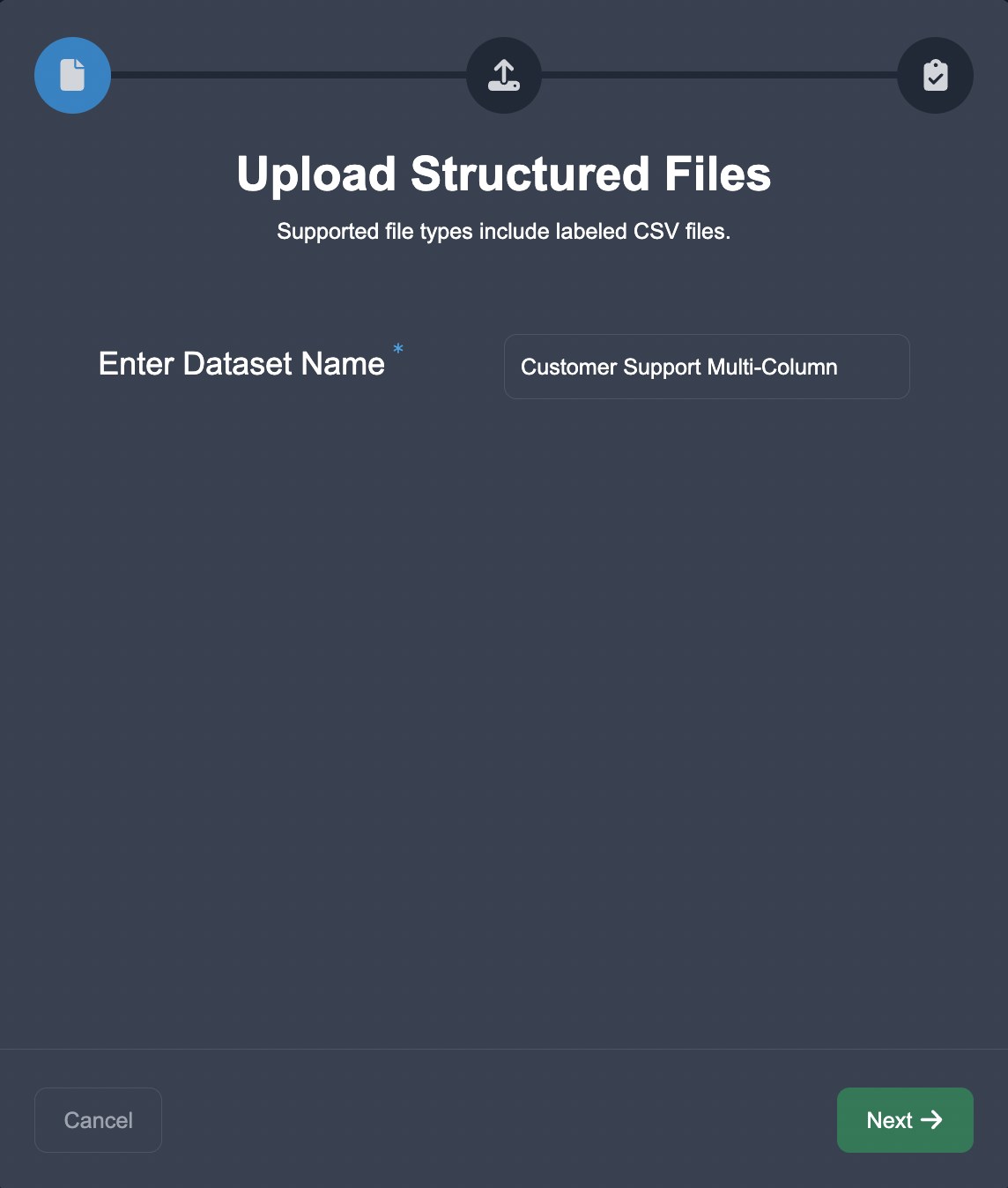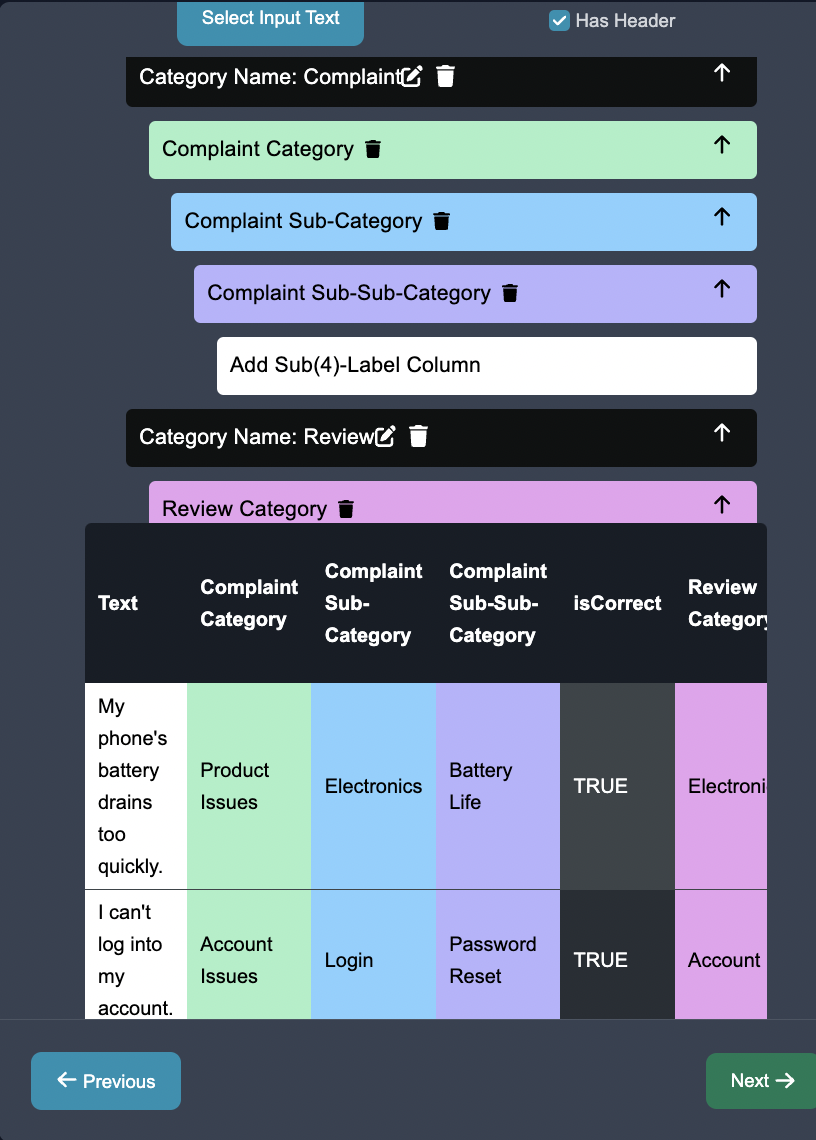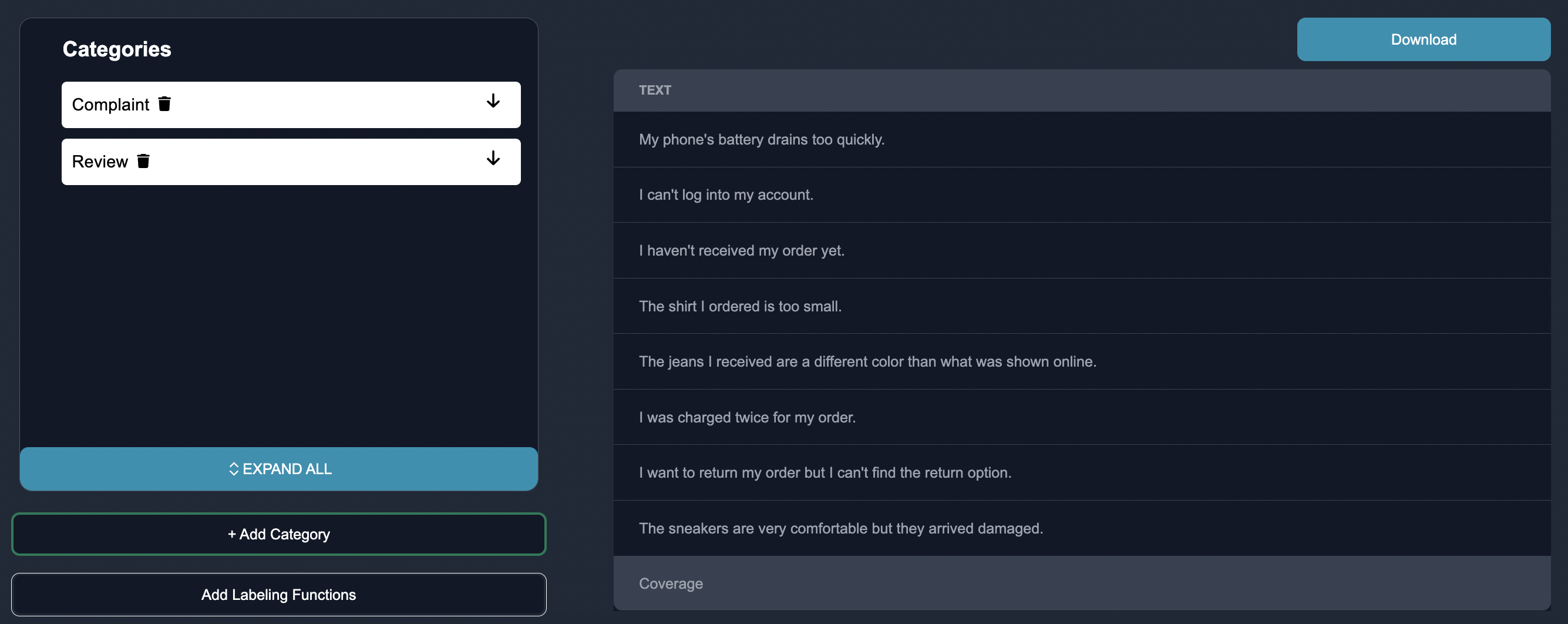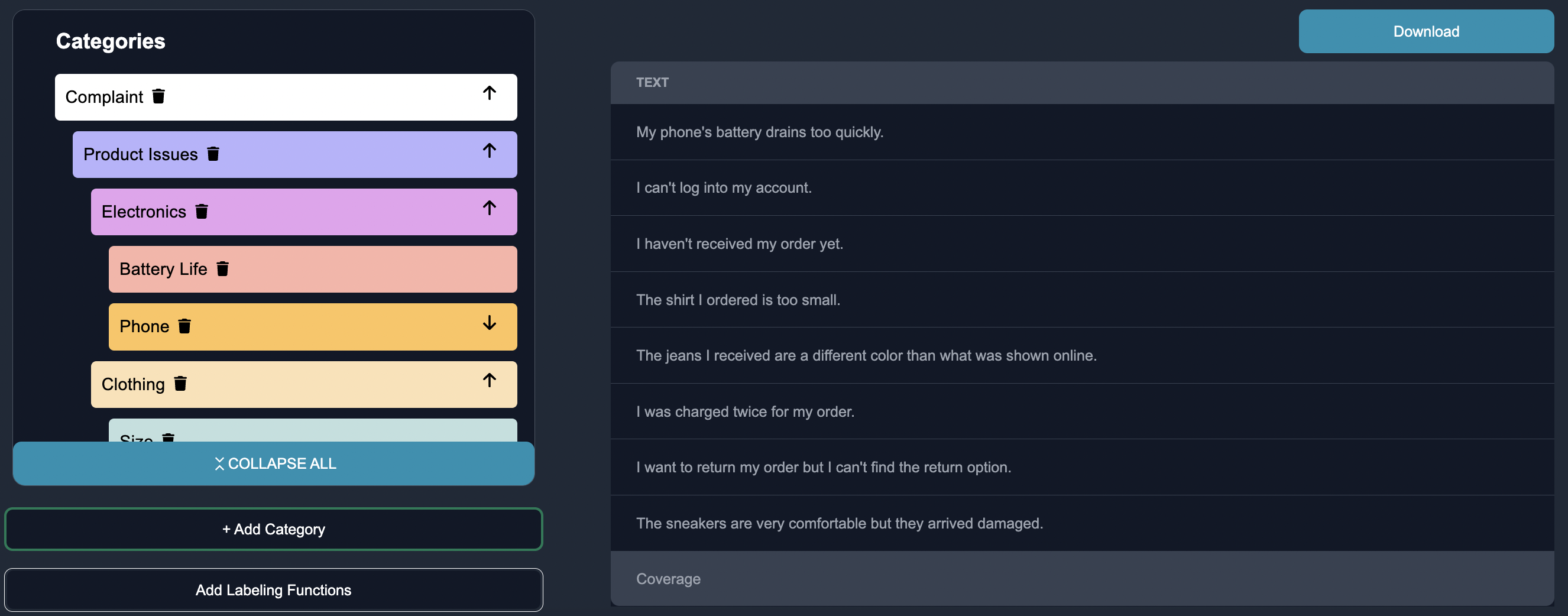Multi-Column Hierarchies
Multi-column hierarchies involve organizing data into a hierarchical structure with multiple levels. In the context of predicting on two columns, Complaints and Reviews, this approach allows for a more detailed classification and analysis of customer support interactions.
Dataset
The dataset consists of customer support interactions along with their corresponding complaints and reviews. The hierarchy for the classification is based on two levels: Complaint Category and Review Category. Here is a sample of the dataset:
| Text | Complaint Category | Complaint Sub-Category | Complaint Sub-Sub-Category | isCorrect | Review Category | Review Sub-Category | Review Sub-Sub-Category |
|---|---|---|---|---|---|---|---|
| My phone's battery drains too quickly. | Product Issues | Electronics | Battery Life | TRUE | Electronics | Phone | Android |
| I can't log into my account. | Account Issues | Login | Password Reset | TRUE | Account | Login | Password Reset |
| I haven't received my order yet. | Shipping Issues | Delivery | Late Delivery | TRUE | Shipping | Delivery | Late |
| The shirt I ordered is too small. | Product Issues | Clothing | Size | TRUE | Clothing | Shirts | T-Shirts |
| The jeans I received are a different color than what was shown online. | Product Issues | Clothing | Color Mismatch | TRUE | Clothing | Pants | Jeans |
The dataset represents various customer support interactions along with the corresponding complaint and review categories.
Approach for Multi-Column Hierarchies
Upload Multi-Column Data
- Upload: Begin by uploading the multi-column dataset containing customer support interactions. Ensure that the dataset includes the Complaints and Reviews columns.


Customize Multi-Column Data
- Customize: Customize the multi-column data by defining the hierarchy levels and categories for both the Complaints and Reviews columns. This customization allows for a tailored and specific classification structure based on your organization's requirements.


Annotate Multi-Column Data
- Annotate: Annotate the multi-column data by assigning the appropriate complaint and review categories to each interaction. Utilize the defined hierarchy levels to ensure accurate categorization at each level. This step involves carefully reviewing each interaction and making informed decisions based on the provided hierarchy.

Notice how over time the stability increases.

Download Multi-Column Data
- Download: Once the data is annotated, download the updated multi-column dataset. This dataset will contain the original interactions along with the assigned complaint and review categories, reflecting the multi-column hierarchy structure.

Additional Features
- Find Mislabels for Each Column, for Each Level of the Hierarchy: Review the annotated dataset to identify any mislabeled instances in the Complaints and Reviews columns. Correcting mislabels ensures the accuracy and reliability of the dataset and the subsequent analysis.


- View Dashboard Metrics for Each Column, for Each Level of the Hierarchy: Generate a comprehensive dashboard that provides metrics and insights for each column at each level of the hierarchy. This dashboard can include statistics such as the distribution of complaints and reviews across categories, accuracy rates at different hierarchy levels, and other relevant performance metrics. Visualizations and summary statistics aid in understanding the data and assessing the effectiveness of the multi-column hierarchy.
By implementing multi-column hierarchies for predicting on the Complaints and Reviews columns, businesses can enhance their understanding of customer support interactions and gain valuable insights for improving their products and services.